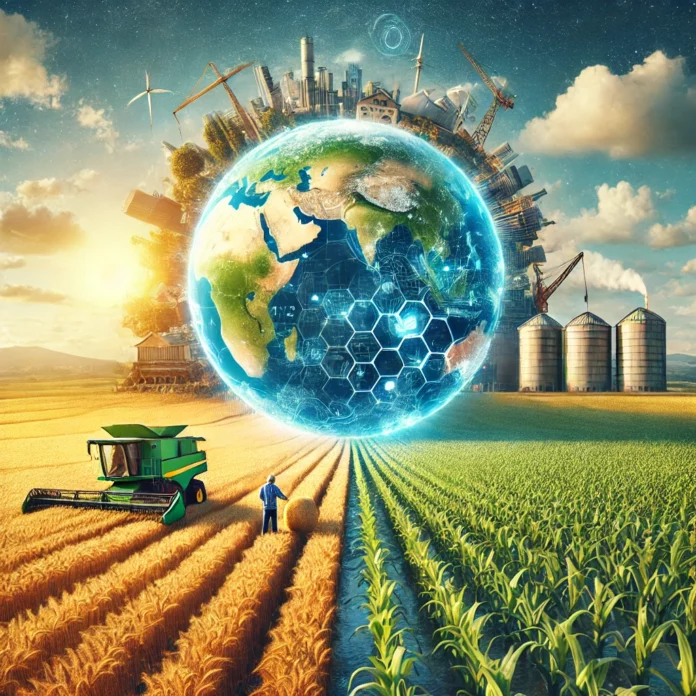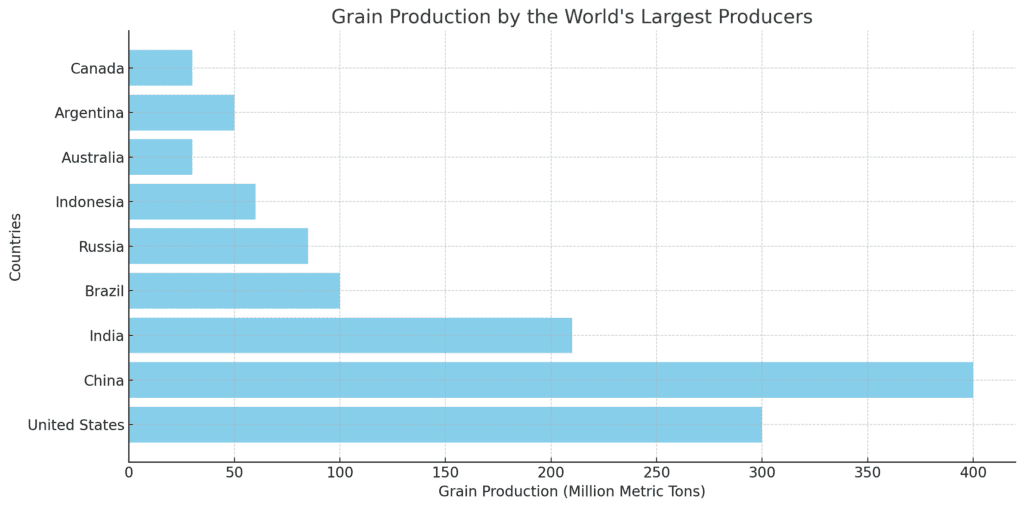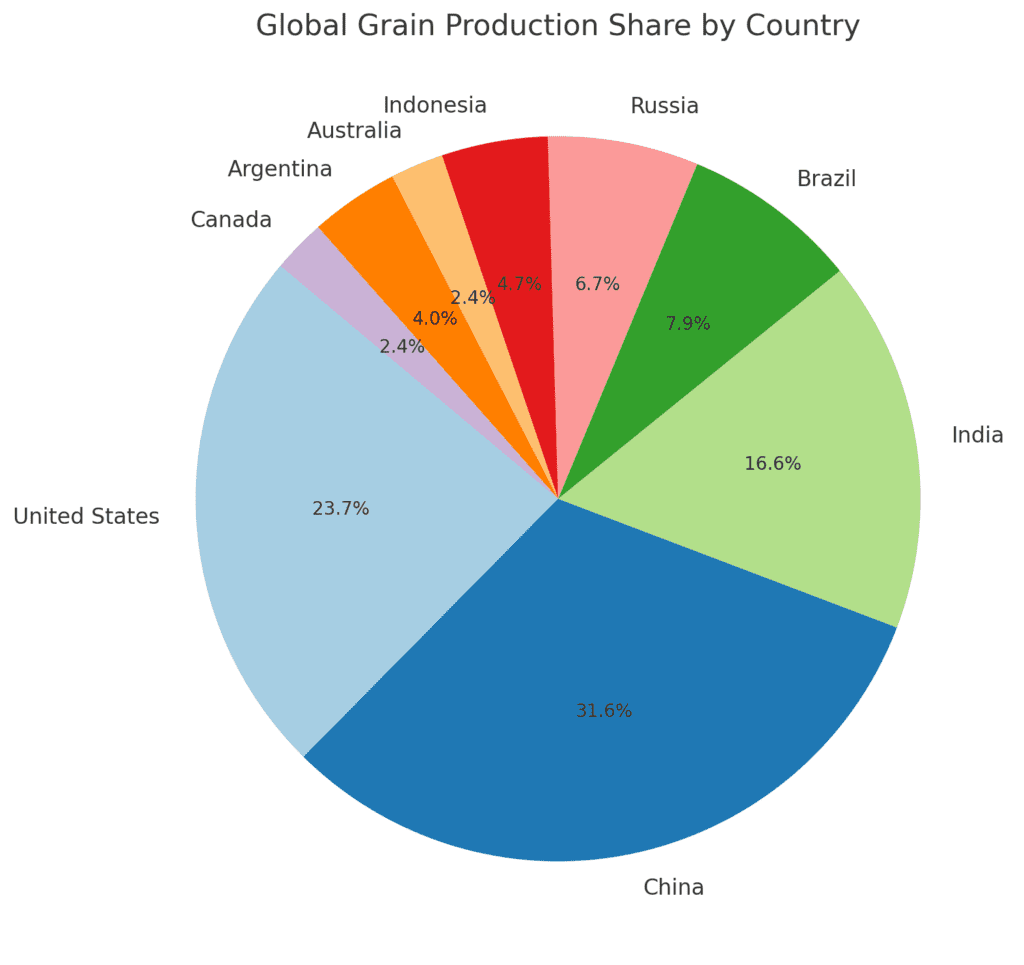
Introduction
Grains are the cornerstone of global food security, serving as staple crops for billions. The world’s largest grain producers play a pivotal role in feeding populations and ensuring a steady supply of essential nutrients. From wheat and corn to rice and barley, these agricultural giants lead the way in cultivation and exports.

Introduction
Grains are the cornerstone of global food security, serving as staple crops for billions. The world’s largest grain producers play a pivotal role in feeding populations and ensuring a steady supply of essential nutrients. From wheat and corn to rice and barley, these agricultural giants lead the way in cultivation and exports.
United States
The United States ranks among the top grain producers globally, dominating in corn and wheat production. With vast arable land and advanced farming technologies, the country produces over 300 million metric tons of corn annually. States like Iowa, Illinois, and Nebraska lead in cultivation, driven by high-yield hybrids and precision agriculture techniques. The U.S. also ranks high in wheat exports, particularly hard red winter and soft red winter varieties.
China
China is the largest producer of rice and wheat globally, sustaining its massive population of 1.4 billion. With nearly 200 million metric tons of rice produced annually, the nation relies heavily on its fertile plains and labor-intensive farming practices. The Yangtze River basin is a major hub for rice cultivation, while provinces like Henan and Shandong lead in wheat production.
India
India is another agricultural powerhouse, ranking second in rice and wheat production. The country’s extensive irrigation systems, such as those in Punjab and Haryana, enable it to produce over 100 million metric tons of rice and 110 million metric tons of wheat yearly. India’s monsoon-dependent agriculture makes it a critical player in the global grain market.
Brazil
Brazil stands out as a leader in soybean and corn production. The country’s tropical climate and abundant land resources allow for two or even three annual harvests in some regions. Mato Grosso, Goiás, and Paraná are major corn-producing states, contributing to Brazil’s annual output of over 100 million metric tons of corn.
Russia
Russia is a global leader in wheat production, with its vast steppes offering ideal conditions for large-scale farming. Producing over 85 million metric tons annually, the country focuses on hard red wheat varieties. Russian wheat is particularly significant in global exports, especially to North Africa and the Middle East.
Indonesia
Indonesia is the third-largest producer of rice, an essential staple for its population. Producing around 60 million metric tons annually, the country depends on its wet tropical climate and terraced rice fields. Regions like Java and Sumatra dominate production, despite challenges like limited arable land.
Australia
Australia is a significant player in wheat production and exports. Known for its high-quality durum wheat, used in pasta, the country produces over 30 million metric tons annually. Western Australia and New South Wales are key wheat-growing regions, benefiting from advanced irrigation and sustainable farming practices.
Argentina
Argentina is a major grain exporter, particularly corn and wheat. With an output of over 50 million metric tons of corn annually, the Pampas region is the heart of Argentine agriculture. The country is also a major player in the global soybean market, bolstered by favorable trade agreements.
Canada
Canada is renowned for its wheat production, particularly spring wheat and durum varieties. Saskatchewan, Alberta, and Manitoba are key regions contributing to the country’s annual wheat output of over 30 million metric tons. Canadian grains are highly valued for their quality, making them a staple in global exports.

Conclusion
The world’s largest grain producers are essential in addressing the challenges of feeding a growing global population. These countries leverage technology, innovation, and sustainable practices to maximize output and meet demand. Understanding the dynamics of grain production offers insights into food security and the agricultural economy’s future.


